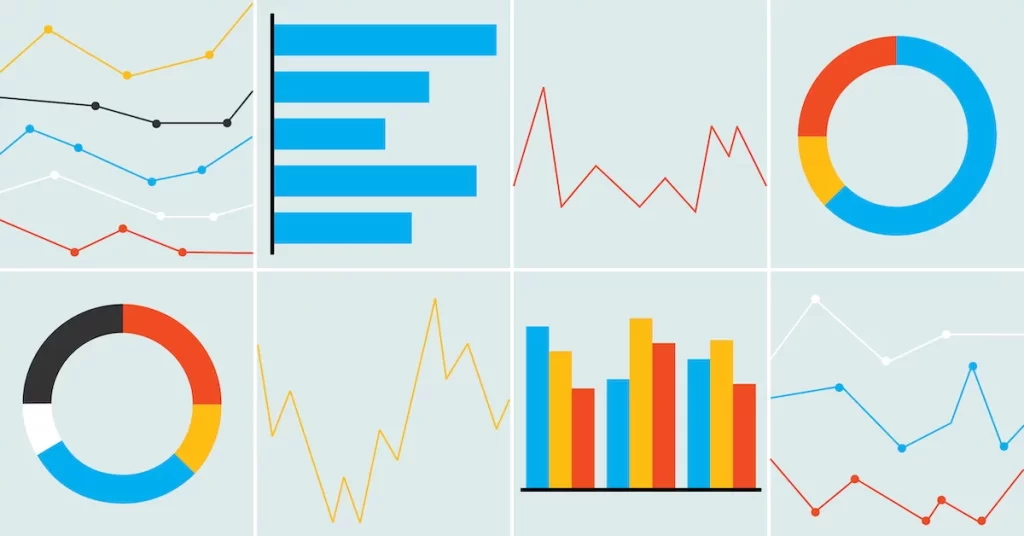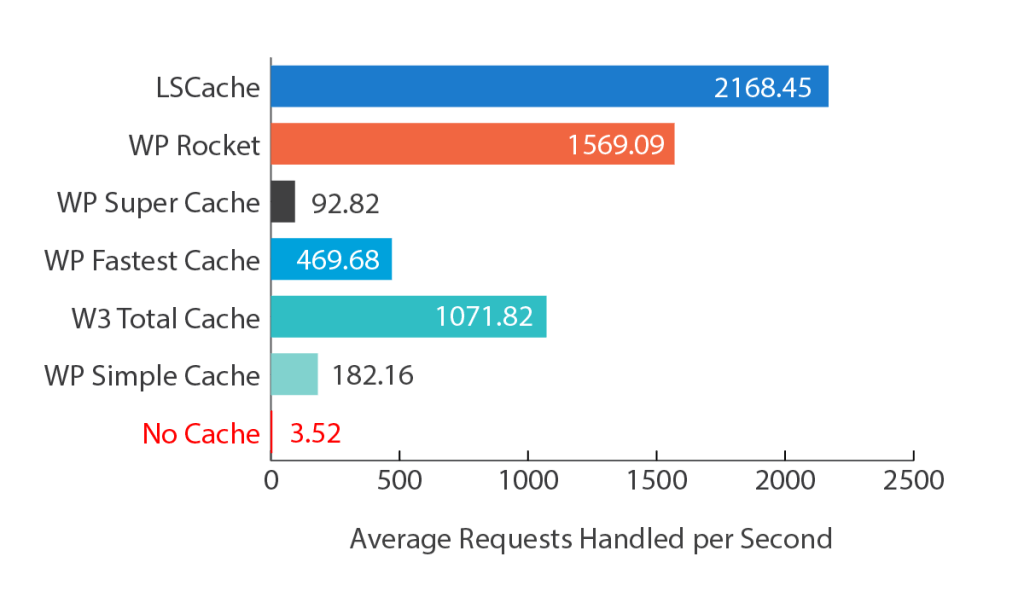Why Consider a Google Analytics Alternative
In choosing a website analytics solution for tracking visitor behavior, page popularity, campaign activity, traffic sources and events, it’s often a foregone conclusion that site owners will opt for Google Analytics, just because of market share and the fact that it’s a free solution.
Over time, as the masses become more informed about the ramifications of choosing Google Analytics, an increasing number of site owners are looking into alternatives.
Read on to find out some of the most common reasons people are checking out Google Analytics alternatives, what options are available in the market and whether it may be a good time for you to make the switch to a different web analytics package.
Reasons for Choosing an Analytics Alternative
Data Ownership and Use
Take the time to read the fine print in the Google Terms of Service and you’ll find that, by using Google Analytics, you’re agreeing that Google can retain and use your analytics data. Did you just take that all in? Yes, Google can keep your website analytics data. Yes, Google can use that information for commercial gain. This isn’t a case of what Google can do, but rather what Google does every day of the week.
The word “retain” is of particular importance here since you’ll have given Google the right to hang on to your analytics information. You’d think that, if you’ve installed Google Analytics tracking code and signed up for an account that you’d be in charge of said data. You might think you can remove the code and delete your account and the data will disappear into the bitbucket. If that’s what you’re thinking, you’d be wrong.
The other important word is “use”. By using Google Analytics, you give Google the right to use your website analytics data as they see fit. Google makes money by showing highly targeted ads to people and charging advertisers for those ads (displays and clicks). By knowing what they’re interested in on your site, Google is able to show laser-focused ads, charge a premium and make boatloads of cash. The scope of this is what concerns many privacy advocates. Does it concern you?
Tracking Consent aka Cookie Consent
Because of the fact that Google is using data from your website via Google Analytics, in many parts of the world you’re required to ask for tracking consent. Laws vary from country to country and apply based on whether you have visitors from those countries to your website.
This raises a couple of potential issues.
Users Can Decline the Request
Tracking consent means that website visitors must be given the opportunity to accept or reject tracking cookies and information about their visit being collected and used by other parties.
With users having the chance to say no, and thus not giving their consent to track, data won’t be collected for these users which translates into less useful (less accurate) analytics information.
The whole point of analytics data is to provide management information for decision making such as knowing what traffic sources, along with pages, posts and products, yield conversions. It’s also used to find out what pages are popular, which posts get read to the end, which videos get watched, what ads resulted in newsletter signups, etc.
Tracking is essential if you want to know what’s working and what’s not so that you can manage your marketing budget effectively. The whole rationale behind analytics is that management can spend more on what visitors like, what they want, what they view and what they buy, and spend less on what they don’t.
If you’ve got data from prior to implementing cookie consent, you may find a drop in traffic and conversions as a result of users opting out of tracking. It’s not that you’ve got less traffic and conversions, but rather that you’ve got less tracked traffic and conversions. This can make performance targets harder to achieve, depending on the percentage of visitors opting out.
Tracking users who have opted out of being tracked isn’t going to happen when using Google Analytics, by design.
Users Can Bounce Away
If confronted with an unfamiliar brand site that puts a consent popup in front of the user, there’s a small (but noticeable) percentage of users who will react negatively by leaving the site and looking elsewhere. When people see popups that require them to agree to something, there’s a certain number of people who will avoid the decision and just go elsewhere. With more and more sites showing these types of consent requests, the percentage of people bouncing away has declined, but it’s still a concern.
The larger and more complex the consent notice screen (or popup), the more likely users are to react negatively to the request, particularly if the brand isn’t a household name.
If you’re using Google Analytics to visitors from a country who requires consent for tracking, consent popup bounce is a small but very real worry.
Mitigating Cookie Consent Issues
For those who plan on sticking with Google Analytics, one way of reducing the impact of tracking consent is to only present the request to users from countries that require such consent and moving right along with users from countries that don’t require such.
This approach sounds easy, just lookup the IP address and display the popup to those who need the option.
The problem is that this is a solution that requires custom code and relies on an accurate IP lookup. IP allocations change and databases can get outdated quickly. Using this could be tricky given the fact that IP lookups are not foolproof and there are so many countries with differing laws about tracking consent.
A different way to get around the problem would be to use an analytics solution that doesn’t use cookies or collect personal data, or even one that’s GDPR, CCPA, HIPAA, etc compliant.
Other Feature Integration
Google Analytics is remarkably powerful, but many functions you’ll want to tap into will require configuration that isn’t as simple as point and click. Conversion funnel paths, goals, events, GDPR integration, A/B testing, heatmaps, and mapping visitor journey paths don’t just happen out of the box. These things either take 3rd party add-ons or configuration and setup by you (some of which will require considerable expertise to do them right).
Google Analytics can enable you to create dashboards and reports for management information, but again, you’re going to need some time and skills in order to get these providing the insights you’ve hoped to see.
Data Sampling
One of the curses of having a popular site, when using Google Analytics, is that once you hit a level of popularity, instead of getting full results, you’ll begin to receive a subset, or a sampling, of the full results. At the point you hit 500,000 sessions within a given date range, you’ll start to get sampled data (for some reports). With flow-visualization, you’ll trigger sampling at the 100,000 session level.
There’s always the pricey option of upgrading to Google Analytics 360, which ups these thresholds considerably.
The problem with relying on sampled data is that you’re apt to make decisions based on limited information that may or may not be representative of the true full data set.
Data Storage Locale
Cloud software and data storage sounds wonderful – your data is spread about here, there and yonder. For resilience and avoiding single point of failure worries, cloud makes sense.
When it comes to data protection, privacy and compliance, having your data scattered about a number of unspecified data centers is full of risks.
What’s the problem with storing data across borders? Some countries require that personal data, for people from the respective countries, be stored within the country. If you’re unfamiliar with these laws, and have international visitors, it’s a great time to get acquainted!
Some site owners opt away from Google Analytics to avoid the storing of resident personal data internationally. Others do it to avoid storing it at all while still retaining much of the core analytics features.
Reporting Delays
One drawback to Google Analytics is the fact that reporting isn’t done in real time for the most part. There are “processing delays” that run from 24 to 48 hours. Depending on your time zone and when you’re requesting the reports, it can seem like a lot longer.
Many alternative analytics packages tout their real-time data reporting capabilities because they know the pain of having information that’s several days old. This may or may not be a huge issue for smaller site owners who only look for reports at weekly, monthly or quarterly intervals.
Page Speed – Bloat
In the race to have the fastest loading pages, many developers and site owners are keenly aware that scripts need to be used which are lightweight. If you’re loading Google Tag Manager and Google Analytics, you’ve added over 56k of weight to the page. Compare that with a lightweight analytics script at under 2k and you can imagine the impact on page speeds. Keep in mind that external scripts require DNS lookups, connection handshaking, SSL negotiation, request, processing delay and response.
Reasons – Some or All
You may find one or more of the above reasons to be enough to justify spending a bit of time getting to know what alternatives there are to Google Analytics. Knowing what’s available in the market and how it compares should help you keep your options open.
Read on to find out about some of the best free and freemium Google Analytics alternatives.
Top Google Analytics Alternatives
Clicky
For sites with under 3,000 total daily page views, Clicky offers a free plan. You’ll not receive the premium features like goal tracking, campaign tracking and outbound link tracking, but will get a fully functional, basic analytics package.
Up the ante to $9.99 or $14.99 a month and you can get the premium features and a 30,000 total daily page view limit. The difference between these two options is that the latter entitles you to view heatmaps and uptime tracking.
Beyond this point, it’s simply a case of more visitors, more monthly fees, should your site merit such. With all premium plans you can track multiple sites and spread your daily page view count across them.
Clicky is strong when it comes to visitor details and the ability to see what particular visitors have seen and done over their X most recent visits. With 15+ years of experience, Clicky has evolved into a feature-rich solution that includes mobile apps, heat maps, real-time reporting and more, all within an easy to use interface.
The only real drawback, when comparing to Google Analytics is the fact that you’ll need to go premium to unlock the comparable features. It’s not expensive, but does mean you’re not actually comparing free with free.
Open Web Analytics (OWA)
OWA, or Open Web Analytics, is an incredibly feature-filled open source web analytics package that, from a feature perspective, rival that of Google, Clicky or Matomo.
OWA may look a bit dated when comparing the user interface, but that’s simply a reflection of the fact that it has been around awhile and relies on visual elements that have been created and debugged across several years.
The strengths of OWA include the free price tag, privacy and data control, plus of course the massive number of features that even the most demanding Google Analytics users will demand.
OWA is the brainchild of one developer which translates into limited support and feature expansion. If Peter Adams is busy, things don’t get updated. The lack of updates is something that makes OWA a 2nd tier option. It feels dated, because it is dated. That doesn’t mean it doesn’t work – but rather that it’s not keeping up with the other choices in the market.
Matomo (formerly Piwik)
Piwik has been rebranded as Matomo and is definitely a serious contender in the field of Google Analytics alternatives. It could be the fact that there are nearly 1.5 million websites running Matomo. It could be the fact that the software has been in use for more than a dozen years. It could even be the extensive list of proven features that make it such a popular option.
Matomo brings an open source package to the market that gives site owners 100% data ownership. If you choose self-hosting, Matomo is free. Opt for the premium cloud-hosted option and there is a monthly subscription. In paying, you unlock some extra capabilities. However, the free version is no slouch!
The reporting capabilities of Matomo are powerful, with dashboard at-a-glance reports being readily available and more advanced details present with a bit of drill-down.
Matomo is not only privacy friendly, but also extensible using plugins readily available. It’s also got the ability to import historical Google Analytics data so that you can measure apples to apples over time without having to wait for new data to accumulate over time.
There are very few negatives in evaluating Matomo. You will need to pay for premium to unlock the full capabilities. Also, the fact that there is a smaller install-base means you’ll have less places to turn for help and information. It may be that you never need help, but these are the times that a larger base comes in handy.
Overall, Matomo is a strong contender in the battle against Google Analytics.
Plausible
Plausible doesn’t try to mimic all the features, functions and complexity of Google Analytics, instead opting for simplicity, speed and privacy. If you’ve ever just wanted some information about who’s visiting what pages and would like to know where they came from, then Plausible merits consideration.
By avoiding the use of cookies or the storing of personal information, Plausible manages to be very privacy friendly, particularly if you opt for the self-hosted option. Campaign tracking, goals and events are all doable. Want to share the data? If you choose to do so, analytics data can be shared via a public URL or privately using a secure link with password protection.
With Plausible being open source, there are no mysteries about what is going on behind the scenes. Even future development work is roadmapped and shared publicly, given the community a chance to contribute and shape the direction forward.
The greatest strength of Plausible is also its greatest weakness. The simplicity means you don’t get loads of information about previous visits from the particular visitor and that’s just the tip of the iceberg. High speed and lightweight come at a price – feature limitations. For many, this won’t be a concern. For others, it means Plausible just doesn’t have the robust laundry list of features that marketers crave.
Conclusion
If you’re tired of the inherent issues that come with using Google Analytics, and you’re ready to consider one of the above Google Analytics alternatives, then now is as good a time as any to get started.
Look at running both Google Analytics and a competing package side by side, or look at using one which will allow you to import your previous analytics data so that you can view previous and new data both.
If you’re delivering pages to users in countries with data privacy requirements that necessitate opting in for tracking consent, don’t forget to deploy a cookie consent plugin, where required, or pick a package that doesn’t require such. Sometimes the tradeoffs in tracking simplicity are worth the eased admin overhead that comes with such.
The number one decision criteria is often, “What are you going to do with that tracked data?”. If you’re not going to use campaign data or visitor historical information in managing your marketing activities, then why load up a heavyweight package that provides you that data, when simpler, easier to use packages (which are faster to load) are available?
Let your needs and priorities drive your decisions!





